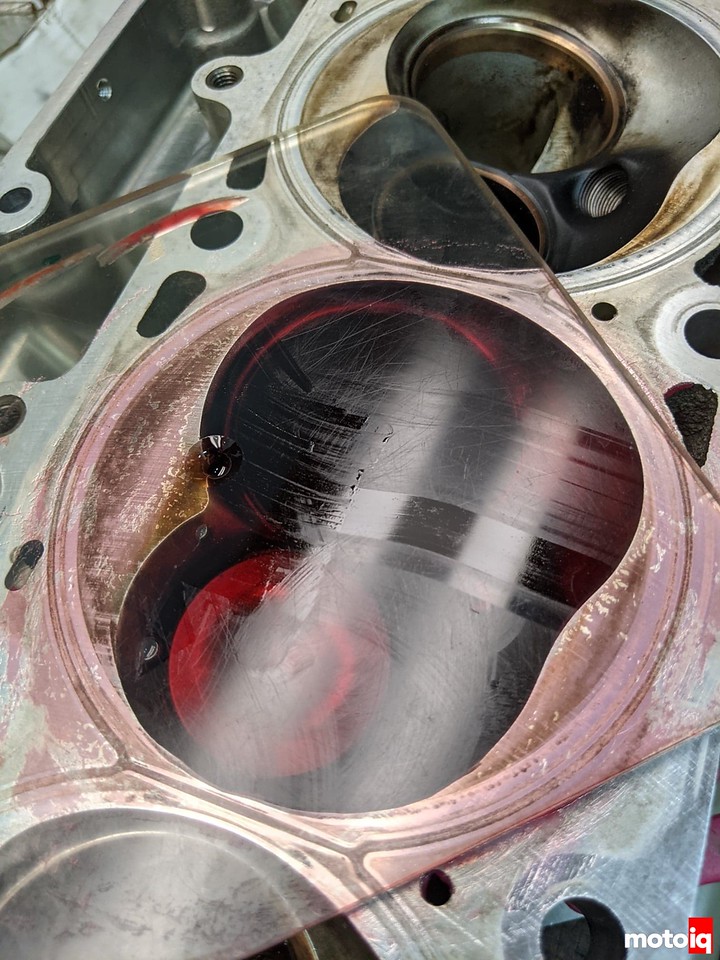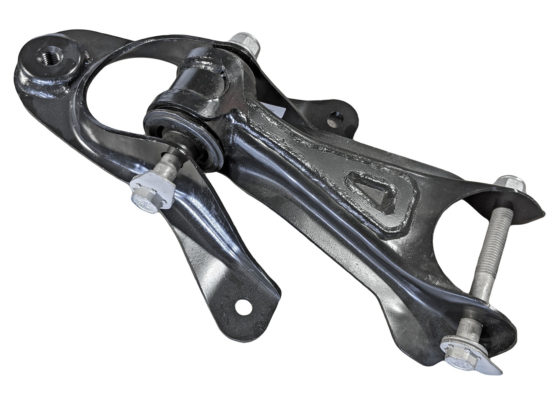
It is very important to know your combustion chamber volume when building an engine so you can know your exact compression ratio or order the correct dome volume piston to get the compression ratio you desire. Ordering shelf pistons with some supposed compression ratio does not often get you the stated compression ratio that the piston manufacture says you will. Usually there is quite a bit of variation of combustion chamber volumes of the same engine within the engine family for instance and your shelf piston that is advertised at 10:1 might yield an actual compression ratio from 9:1 to 11:1 depending on what lash up of parts you have.
To get your true compression ratio you need to know:
- The cylinder volume [(bore ÷ 2)2 x 3.1416 x stroke x 16.387]
- The clearance volume [(bore ÷ 2)2 x 3.1416 x deck height x 16.387]
- The gasket volume (bore ÷ 2)2 x 3.1416 x gasket thickness x 16.387]
- The chamber volume, Value from manufacturer confirmed through measurement
- The piston dome volume, From the piston manufacture or specified by you if a custom piston
So to get the compression ratio you add up the swept volume which is 1-5, 5 could be adding if the piston has a dome, zero if it is a flat top or subtracting if the piston has a dish. Next you figure out the compressed volume which is adding 2-5 and divide the swept volume by the compressed volume to get your compression ratio.
So you have control of the piston positive or negative volume if you are spec’ing a custom piston so you can set your exact compression ratio. If using a shelf piston, you can look up your dome volume from your piston manufacture. So the big variable that you have to actually measure to accurately know your compression ration is your combustion chamber volume. Here is an easy way to do it without special equipment.

You need to have the intake and exhaust valve(s) for one cylinder to start determining your combustion chamber volume.

Put a layer of grease on the valve’s seating surfaces. You will also want to install a spark plug in the cylinder you will be measuring.




1 comment
Very creative Mike ! I borrowed a 50 ml burette from work for this, and double checked one of the 6 chambers to verify consistency. My old GT6 had flat top pistons with a variation on distance from deck height to top of pistons. To compensate for this each head chamber had different volumes, so when bolted up, the total volumes were identical.
I also borrowed a triple-beam balance for matching piston weights. Other balancing was done by a trusted machine shop.